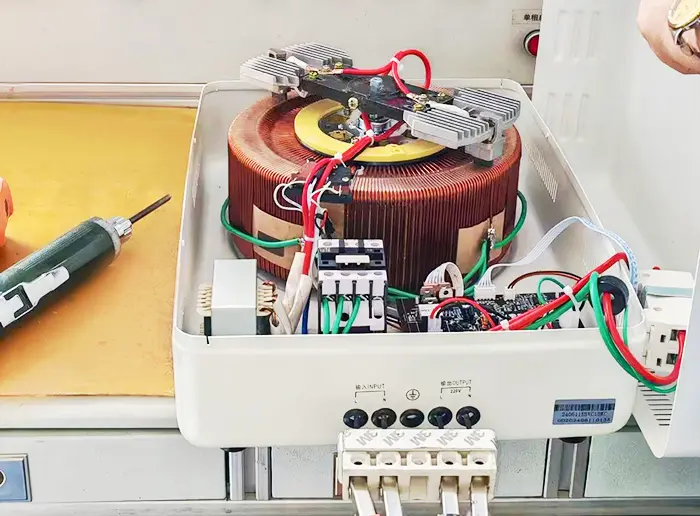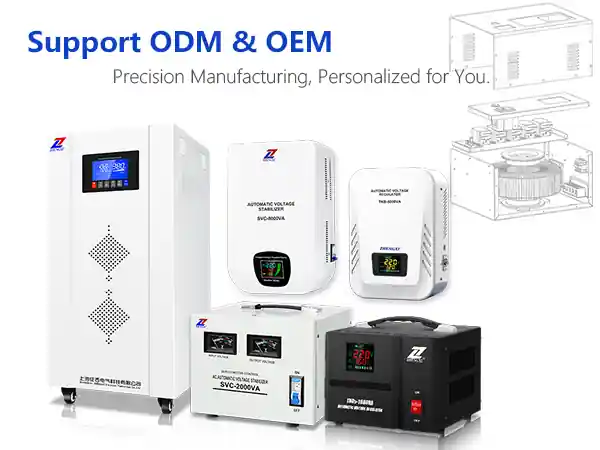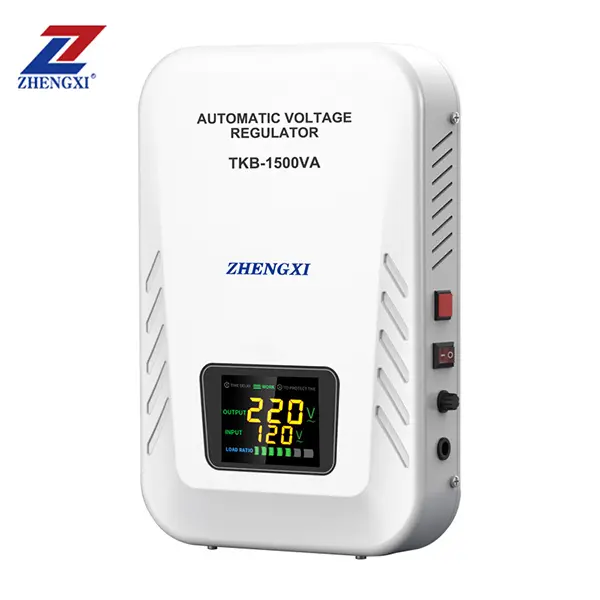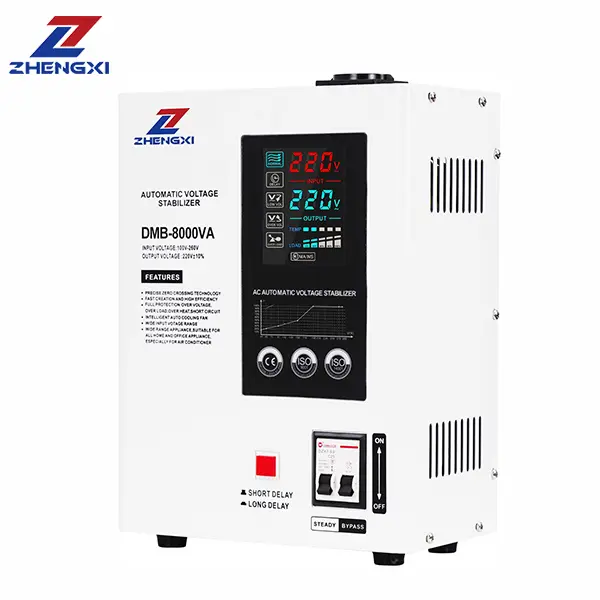A single‑phase voltage regulator (also called a single‑phase AVR or stabilizer) is a device that automatically maintains a steady voltage on a single‑phase supply. In areas prone to brownouts, surges, or wide voltage swings, fitting a regulator between the mains and your equipment protects appliances, motors, and electronics from damage.
How Single‑Phase Regulators Work
Single‑phase AVRs use one of three control methods:
| Type | Principle | Pros | Cons |
|---|---|---|---|
| Servo | A small motor (servo) moves a carbon brush along transformer taps for smooth, continuous correction. | ±1% accuracy; ideal for inductive loads | Periodic brush maintenance |
| Static | Power electronics (IGBT/SCR) switch taps almost instantly in microseconds. | <20 ms response; no moving parts | Slightly less smooth under light load |
| Relay | Electromechanical relays step through preset taps in 1–2% increments. | Cost‑effective; simple design | Slower (50–100 ms); ±2–3% accuracy |

Why You Need a Single‑Phase Regulator
- Protects Appliances: Prevents compressor burnout in air conditioners and overheating in refrigerators.
- Stabilizes Power: Keeps sensitive electronics (TVs, computers) within their rated voltage band.
- Saves Energy: Reduces losses when motors run at correct voltages, extending lifespan.
- Simple Installation: Wall‑mount or floor units wire directly into single‑phase circuits.
Sizing Your Regulator: kVA Selection
- Calculate Total Load (kW): Sum the wattage of all devices.
- Convert to kVA: Divide by power factor (typical PF = 0.8).
- Add Safety Margin: Multiply by 1.2–1.3 to handle startup currents.
| Example Load | Wattage | kVA (÷0.8) | Recommended Regulator |
|---|---|---|---|
| Refrigerator (300 W) | 300 | 0.375 | 1 kVA |
| AC (1 HP ≈ 1.1 kW) | 1,100 | 1.375 | 2 kVA |
| TV & PC (200 W + 300 W) | 500 | 0.625 | 1 kVA |
| Combined Home Load | 2,000 | 2.5 | 3 kVA |
Tip: Choose single‑phase or three‑phase regulator based on your mains wiring, not just load size.
Installation Overview
- Power‑off & Safety: Turn off breakers; use protective gear.
- Mount Unit: Secure regulator within 1 m of load’s distribution board.
- Connect Input/Output:
- Input L/N/E → mains live/neutral/earth
- Output L/N/E → appliance’s live/neutral/earth
- Tighten & Test: Torque terminals per manual; verify with a multimeter.

Maintenance & Troubleshooting
- Servo Regulators: Inspect brushes every 6 months.
- Static/Relay: Visual check of relays/contacts annually.
- General: Keep vents clear; clean dust with compressed air.
- Troubleshooting: If output drifts, check input voltage range and wiring tightness first.
Authoritative References
- IEEE Std C57.110 – Guidelines on voltage regulation
- IEC 60076‑5 – Tap‑changer reliability
- ABB Application Note: “Single‑Phase AVR for HVAC Systems”
- Schneider Whitepaper: “Improving Power Quality with Static Regulators”
Embedding these standards ensures your installation meets global best practices.
Frequently Asked Questions
Q1: Can a single‑phase regulator work on a three‑phase supply?
A: No. For three‑phase systems, use a dedicated three‑phase voltage regulator with three single‑phase modules or a built‑in 3φ control.
Q2: How do I choose between servo, static, and relay types voltage stabilizer?
A:
- Servo stabilizer: Best for motors and HVAC—high precision.
- Static stabilizer: Excellent for computers and labs—fast, low maintenance.
- Relay stabilizer: Budget‑friendly for basic home electronics.
Q3: What wire gauge do I use?
A: Follow the regulator’s manual. Typical: up to 5 kVA → 2.5 mm²; 5–10 kVA → 4 mm² copper cable
Q4: Why does my AVR hum?
A: Slight hum is normal from transformers or servo motors. Excessive noise may indicate loose core laminations or worn brushes.
Next Steps & Contact
Ready to protect your equipment with a top‑quality single‑phase voltage regulator? Contact ZHENGXI Electric for custom quotes, OEM options, and in‑region support.
👉 Get Your Quote Today








